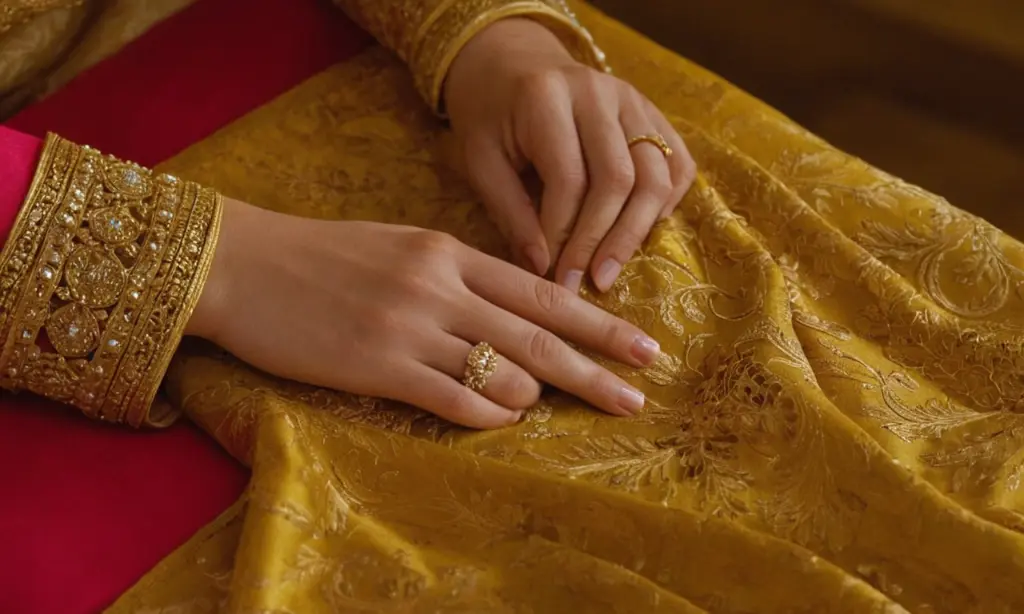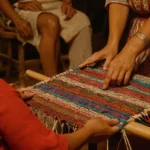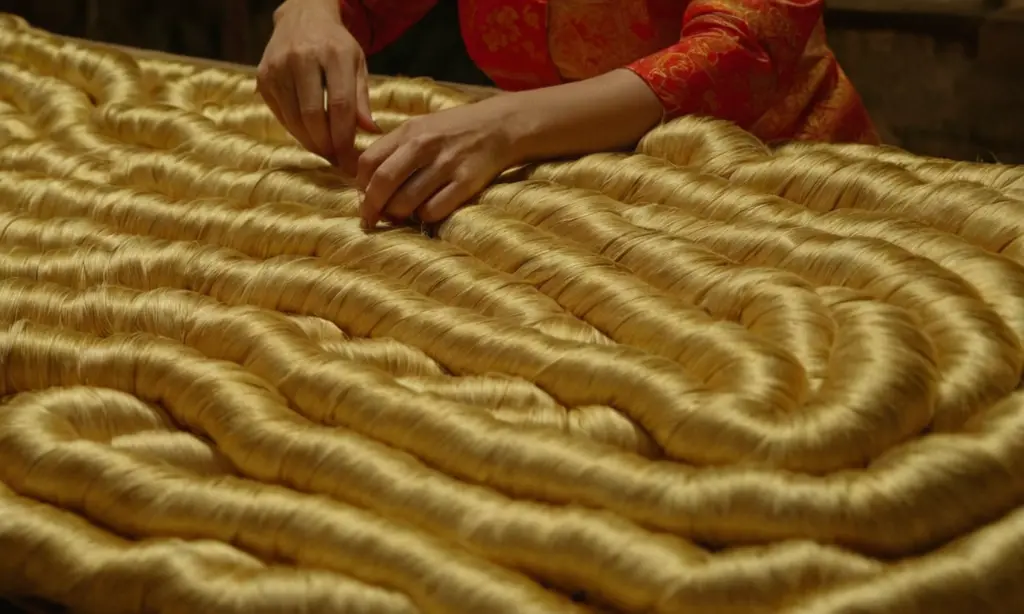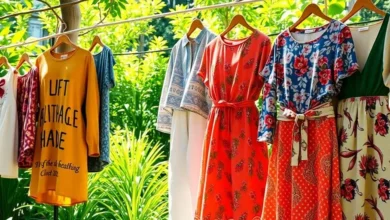Assam silk, often referred to as India’s ‘liquid gold,’ is a treasure trove of culture, history, and unparalleled craftsmanship. Woven in the northeastern state of Assam, this luxurious fabric holds a special place in the world of textiles, known for its unique luster, durability, and rich heritage. Let’s embark on a journey to explore the fascinating story of Assam silk, its origins, production methods, and its significance in the global luxury market.
What Makes Assam Silk So Special?
What exactly makes Assam silk stand out from the multitude of silk varieties? It’s a combination of factors, each contributing to its unique identity:

- Unique Silkworms: Unlike other silk varieties, Assam silk is produced by three distinct types of silkworms: Muga, Eri, and Paat. Each produces a silk with distinct characteristics.
- Golden Hue: Muga silk, in particular, is famous for its natural golden luster, a characteristic that no other silk possesses. This golden sheen develops over time and is often enhanced with use.
- Durability: Assam silk, especially Muga, is incredibly durable and can last for generations, making it a valuable heirloom.
- Natural Production: The cultivation of these silkworms and the processing of the silk are done using largely traditional and natural methods, adding to its appeal.
The Three Pillars of Assam Silk: Muga, Eri, and Paat
Let’s delve deeper into the different types of silk that come from Assam:

- Muga Silk: Known as the “golden silk” of Assam, Muga is the most celebrated variety. It is obtained from the Antheraea assamensis silkworm, which feeds on the leaves of the Som and Soalu plants. Muga silk is known for its lustrous golden-yellow color, durability, and is the most expensive. Its natural sheen is not artificial, which is a sign of its premium quality. This silk is revered for its traditional significance and is often used for special occasions and heirlooms. Muga’s unique color is why Assam Silk is called ‘liquid gold’.
- Eri Silk: Also known as “Ahimsa Silk” or “Peace Silk”, Eri is produced from the Samia cynthia ricini silkworm, which feeds on castor leaves. Unlike other silk varieties, the Eri silkworm is allowed to complete its metamorphosis, and the cocoon is harvested only after the moth emerges. This makes it a more ethical silk choice. Eri silk is known for its soft texture, thermal properties, and slightly duller appearance compared to Muga. It’s perfect for comfortable, everyday wear and has a matte finish. It is also the most versatile silk produced in Assam.
- Paat Silk: This is a mulberry silk, similar to the silk produced in other parts of the world, but produced by the Bombyx mori silkworm. This silk is valued for its fine texture, brilliant white color, and ability to take vibrant dyes. Paat is often used for sarees and traditional attire, offering a classic, elegant appearance. It’s also the softest of the three types.
A Journey Through Time: The Historical Roots of Assam Silk
The history of Assam silk is deeply intertwined with the cultural heritage of the region. It is not merely a textile but a part of the social fabric and economic system of Assam. Evidence suggests that silk production in the region dates back centuries.
See also Backstrap Loom Weaving: Mexico’s Ancient Craft Thriving in the Modern Era
Backstrap Loom Weaving: Mexico’s Ancient Craft Thriving in the Modern EraAncient Origins and Royal Patronage
The practice of rearing silkworms and weaving silk has been a part of Assamese life for generations. Historical texts and accounts show that silk was highly valued even in ancient Assam. The Ahom dynasty, which ruled Assam for six centuries, played a significant role in promoting the silk industry. The Ahom kings used silk as a symbol of wealth, status, and power, often commissioning exquisite silk textiles for themselves and their court.
The Significance of Silk in Assamese Culture
Silk is more than a fabric in Assam; it is an integral part of various cultural rituals and ceremonies. Muga silk, in particular, holds immense cultural significance and is often worn during weddings, festivals, and religious ceremonies.
Traditional attire, such as the Mekhela Chador (the traditional Assamese dress for women) and the Gamosa (a symbolic cloth), often feature silk, highlighting its importance in the Assamese way of life. Silk textiles also often include traditional Assamese motifs, reflecting the region’s art and culture.
The Art of Silk Production: From Silkworm to Fabric
The production of Assam silk is a multi-step process that requires a combination of traditional knowledge and skilled craftsmanship. From the silkworm’s care to the final product, this process is a testament to the dedication of the local artisans.
See also
Rearing the Silkworms
The life cycle of the silkworm is meticulously managed by farmers. The process starts with nurturing the silkworms and feeding them with the appropriate leaves. For instance, Muga silkworms are reared outdoors on Som and Soalu trees, which are specially grown for this purpose.
Eri silkworms, on the other hand, are reared indoors, feeding on castor leaves. The feeding process can take several weeks and is critical for cocoon quality. The care of the silkworms is an art form in itself, passed down through generations of families.
Harvesting the Cocoons
Once the silkworms spin their cocoons, the cocoons are harvested. The method for harvesting varies depending on the silk type. For Muga, the cocoons are carefully collected, while Eri cocoons are harvested only after the moth emerges, which is what makes Eri Silk an ethical choice. These cocoons are the source of raw silk thread.
Spinning the Silk
The cocoons are then processed to extract the silk fiber. Traditional methods, including hand-spinning and reeled methods, are employed. For Muga silk, the cocoons are reeled, often with hand-operated spinning machines. The silk threads are then prepared for weaving. The process requires skill and patience, turning raw silk into usable threads.
The Art of Weaving
The final stage in the process is weaving the silk fabric. In Assam, this is largely done on traditional handlooms, which are operated by skilled weavers. Weaving is often a family activity, with skills passed down through generations. The traditional handlooms impart a unique texture and character to the fabric that cannot be replicated by machine. The patterns woven into the silk often carry symbolic and cultural significance.
Assam Silk in the Global Luxury Market
Assam silk, especially Muga, is highly sought after in the global luxury market for its uniqueness and exquisite quality. It is not merely a fabric but a symbol of heritage, craftsmanship, and exclusivity.
Demand and Exclusivity
The limited production of Assam silk, particularly Muga, contributes to its high demand and exclusivity. The time and labor-intensive production process means that the supply is naturally limited, enhancing its desirability in the luxury market. Its golden hue and durability are difficult to replicate, making it highly sought after by discerning customers.
Fashion and Design
Assam silk is increasingly being used by high-end fashion designers and brands. From couture gowns to luxury accessories, the unique character of Assam silk adds a touch of exotic elegance to modern designs. This allows for the preservation of ancient weaving techniques and skills to remain relevant in today’s fashion.
Home Decor and Furnishing
Beyond fashion, Assam silk is also valued for home decor and furnishings. Its rich colors and textures make it ideal for luxury drapes, cushion covers, and other home accessories. The luxurious look and feel of the silk make it a popular choice for high-end interiors.
Preserving Heritage and Supporting Local Communities
The growing global demand for Assam silk provides significant economic opportunities for the local communities in Assam, many of whom rely on sericulture and weaving as their primary livelihood. It helps preserve traditional techniques, and empowers local artisans.
Challenges and the Future of Assam Silk
While Assam silk enjoys global recognition, the industry faces its share of challenges. Addressing these challenges is essential to ensure the sustainable growth and preservation of this invaluable heritage.

Climate Change and Environmental Factors
Climate change and environmental degradation pose a significant threat to the silk industry in Assam. Changes in temperature and rainfall can affect the growth of silkworm food plants and the silkworms themselves, impacting the yield and quality of silk.
Competition from Cheaper Imitations
The high cost of production makes Assam silk vulnerable to competition from cheaper imitations. These imitations often lack the authenticity, durability, and unique characteristics of genuine Assam silk. This is a significant threat to the market.
Need for Modernization and Support
While traditional techniques are vital, there is also a need for modernization in certain aspects of the industry, especially in spinning and marketing. Government support, research, and development programs can play a crucial role in enhancing the efficiency of silk production and marketing it globally. Investing in infrastructure and skills training can help the industry reach its full potential.
Sustainability and Ethical Practices
Promoting sustainable and ethical practices is paramount for the long-term growth of the Assam silk industry. This includes promoting organic silk production, ensuring fair trade practices, and respecting the traditional knowledge and skills of local artisans. It also involves working to protect the natural habitats that the silkworms depend on.
Assam silk is more than just a fabric; it is a tapestry woven with history, culture, and tradition. Its exquisite beauty, unique characteristics, and sustainable production methods make it a valuable part of India’s textile heritage. As the global luxury market continues to seek out authenticity and uniqueness, Assam silk, with its ‘liquid gold’ sheen, is poised to shine brighter than ever.
By addressing the challenges and embracing sustainable practices, this precious heritage can continue to thrive and delight generations to come. Its legacy continues to weave a golden thread through the world of global luxury.



